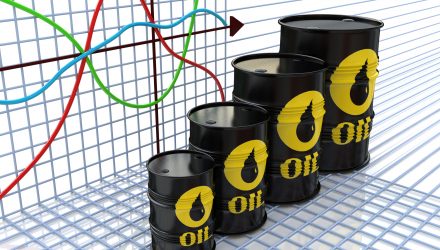As the Dow Jones Industrial Average had its worst day of 2019 with an 800-point loss on Wednesday, the market woes spilled over into oil prices. WTI crude fell more than 5 percent while Brent crude fell just as much amid the sell-offs.
In addition, the U.S.-China trade war is making Chinese traders from making bets in U.S. crude. This comes even as economic indicators are favorable for U.S. oil.
Per an OilPrice.com report, “Chinese refiners and traders have been staying away from U.S.-origin crude cargoes for months amid the trade war, despite the fact that China doesn’t have tariffs imposed on U.S. oil. The escalation of the trade war at the beginning of this month, when U.S. President Donald Trump said the United States would levy a 10-percent tariff on the remaining $300 billion worth of Chinese imports that hadn’t been subject to tariffs yet, has made China’s oil traders and refiners even more reluctant to contract U.S. cargoes. “
What can make Chinese traders come back to U.S. oil? One trader said the U.S. would have to drop China from the “currency manipulator” list—something the second largest economy is obviously not happy with.
“The United States disregards the facts and unreasonably affixes China with the label of ‘currency manipulators,’ which is a behavior that harms others and oneself,” the People’s Bank of China saidin a statement on Tuesday. “The Chinese side firmly opposes this.”
Likewise, the country’s traders responded in tow.
“They won’t buy unless the US ceases tariffs and withdraws the statement saying that China was a currency manipulator,” a trader based in Shanghai and dealing with a U.S. crude oil supplier told S&P Global Platts.
Leveraging Oil Via Energy Sector Trades
Two funds for traders to consider are the Direxion Daily Energy Bull 3X Shares (NYSEArca: ERX) for bullish plays and the Direxion Daily Energy Bear 3X Shares (ERY) for bearish opportunities to take advantage of.
ERX seeks daily investment results equal to 300 percent of the daily performance of the Energy Select Sector Index. The index is provided by S&P Dow Jones Indices and includes domestic companies from the energy sector which includes the following industries: oil, gas and consumable fuels; and energy equipment and services.
On the other hand, ERY seeks daily investment results equal to 300 percent of the inverse of the daily performance of the Energy Select Sector Index. Like ERX, the index ERY tracks is provided by S&P Dow Jones Indices and includes domestic companies from the energy sector which includes the following industries: oil, gas and consumable fuels; and energy equipment and services.
For more relative market trends, visit ETFtrends.com.








